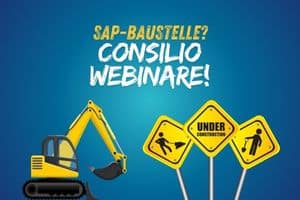By Oliver Nietsch, Account Manager IT System Development Portals, ServiceXpert GmbH, Hamburg
The digital transformation as a radical structural change of entire industries can be found in almost all central strategies of companies today. In the automotive industry in particular existing value chains are disrupted by automation, networking, sensor technology, cross-system data-driven processes, digital customer interfaces and the call for innovative services. Vehicle manufacturers are forced to open up new business areas. Drivers of change in the vehicle industry are, for example, the call for new digital products and services in and around the vehicle, changing customer needs away from product customers to service customers, connected vehicles and services. In addition, automation, regulatory requirements and new sales and after-sales models with direct customer communication and active customer interaction are playing a driving role in the transformation.
The challenge for vehicle suppliers is to maintain their strong market position by continuously adapting to what is happening in the market or by setting innovative trends. An important measure for this can be, for example, the expansion of the high-margin service business, which in future will focus on a customer-oriented maintenance strategy. This will open up new potentials for long-term profit growth through attractive new product and service offerings to compensate for declining spare parts sales. New approaches to customer support are also being implemented, which strengthen customer loyalty beyond the warranty period, as well as retain customers of older vehicles with specially tailored service offers. The vehicle manufacturer is also optimising cost development in the warranty phase and beyond.
Digitisation as basis for future-oriented business models
The basis for new business models or the expansion of the service business is a high level of digital maturity of products, processes and the entire organisation. In customer service, for example, the future focus is on proactive, customer-centric support based on cross-system data and digital processes. The goal is to optimise the operational business in After Sales, Service & Repair and Customer Support and to increase After Market profitability. Digitalisation – including vehicle and backend connection, cloud computing, digital process integration and customer interactions – is the key to success! In detail, this involves improving post-sales services through linked workflows across system boundaries, high data quality and predictive mechanisms for data analysis, optimising the customer experience through increased customer interaction, better customer service and new business through new digital services, as well as reducing maintenance costs through proactive data-driven fault detection, product improvements and predictive maintenance for increased customer satisfaction.
The digitalisation of customer support is taking place step by step. Integrated vehicle and customer data across system boundaries are the foundation. Depending on the desired level of maturity in customer service, the requirements for the data to be provided and the integration of various systems increase: from reactive support for fault reports through hotline and customer self-service, to extended troubleshooting through automated fault interpretation and proactive service appointment agreement, to data-initiated customer support, which for proactive customer service combines predictive maintenance, multi-sensor data and actively initiated customer contact.
The key to success in digitisation is structured requirements management. Identifying and defining clear and coordinated measures that are equally understandable for everyone in the organisation is essential.
Structured digitisation by methodical requirements management
The methods of requirements management help to communicate requirements systematically and in a structured way between different stakeholders. As a result, a common understanding of the requirements within a digitisation initiative is achieved between all considered use cases. The red thread in requirements management structures the path from the first product ideas to the system model or successful implementation.
The first step is to identify use cases and understand the system context in order to derive exact requirements later. A use case describes the externally visible behaviour of a product or service from the perspective of the stakeholders. Examples of relevant use cases in after-sales can be quality optimisation in vehicles, cost optimisation for service technician support, the expansion of product functionalities or new services, innovative energy management, real-time vehicle diagnostics or software updates over-the-air as well as remote diagnostics, predictive maintenance or data initiated customer support.
Subsequently, the individual use cases are further specified by description, objective, stakeholder representation, value proposition, interdependencies, expansion stages, required enablers, risks and influencing factors. The result is a project profile for each use case, including a basic project business case analysis, on the basis of which the implementation of the use cases is prioritised.
The requirements and objectives for the new product or service are then described for the selected use cases. The core question here is: “What should the product or the new service be able to do and why?” A requirements template that provides a clear syntactic structure for the description of individual requirements can support this process. The requirements result gathering lead to a specification sheet, for example.
In the second step of requirements management, functions are derived and detailed. Using a function-oriented approach, obligations for the architecture are defined step by step from the specifications. Necessary functions are identified, the logical and physical architecture is defined, the behaviour of the system is described and the aspired solution is specified and documented.
All results lead to a functional specification. The focus here lies on: “How should the product fulfil its functions?”
Use case in practice: real-time information from the vehicle over-the-air for after sales
For a European vehicle manufacturer, ServiceXpert is developing a process in which real-time information can be exchanged over-the-air between the vehicle and the after-sales system. Efficient over-the-air information processing of vehicle codes requires a powerful communication infrastructure between the vehicle and back-end systems. Via 5G, information and service requests are transmitted from the vehicle to the cloud for further processing. So it is possible to provide automated data for the vehicle lifecycle from development to after-sales in real time, independent of the vehicle’s location, and to provide the driver with up-to-date information while driving. In the future, it will also be possible to update the vehicle’s software over the air.
The engineers at ServiceXpert support numerous customers from the automotive industry in the digitalisation of their after-sales processes and have extensive experience, best practice project approaches and use cases. The project spectrum ranges from initial digitisation approaches to the complete, worldwide digital after-sales of large OEMs.
Quelle: OEM&Lieferant – Issue 1/2023





